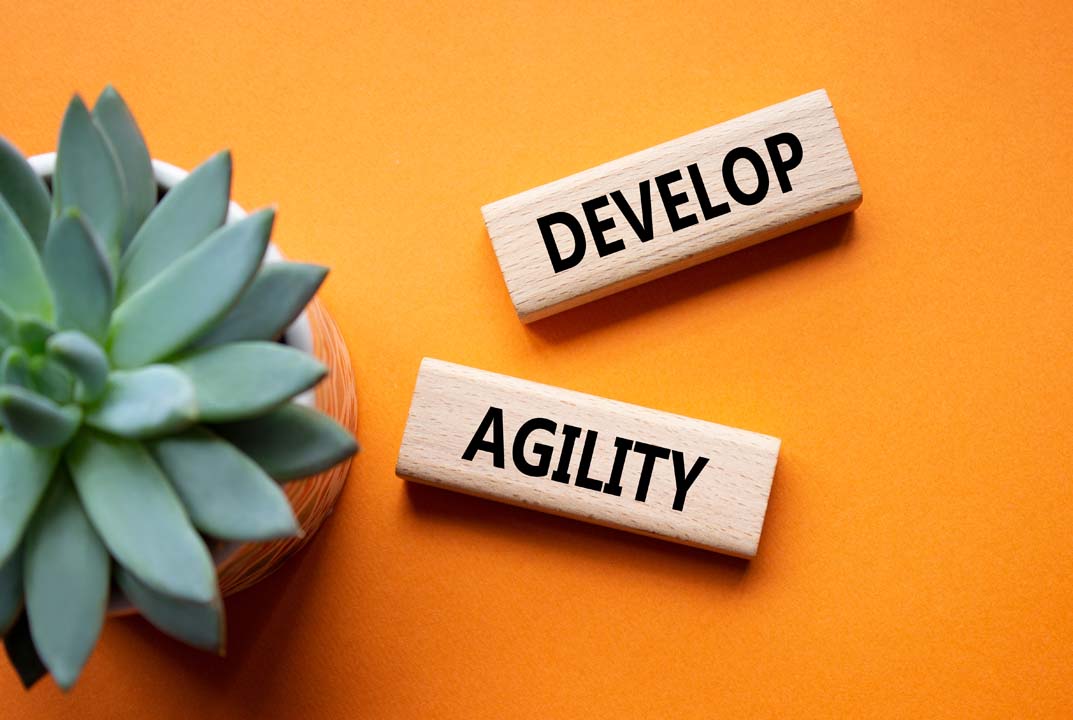Navigating the fog: Pete Behrens shares four pillars of agile leadership for success in disruption
Agility is one of the most significant meta-skills for leaders operating in highly disruptive or disrupted industries to improve leadership effectiveness. The speed and complexity in these environments generate a fog that impedes vision and makes planning efforts feel useless.
Agility, while appearing to be the antithesis of vision and planning, is actually a complementary skill to improve outcomes despite these impediments. However, before learning how to be an agile leader, let’s describe what agile leadership means.
Agility is a competency of change and adaptation. Most definitions of agility focus on quick adaptive movement – like navigating an obstacle course. However, more complete definitions of agility include quick adaptive thought. That means we grow in our ability to scan more options and decide more quickly on a more effective path forward. Without agility in thought, agility in movement is often just wasted energy.
With this definition in mind, let’s explore how you can learn to be a more agile leader.
1) Be clear: keep the vision
Many people see agility as the opposite of vision, when it’s actually in service to vision. When a leader is unclear about where they or their organisation is headed, decisions cannot be deemed bad or good because there is nothing to measure them against. It’s like getting in your car and driving without a goal of where you want to go. It’s only when you add a destination that decisions become clear.
In more complex situations the road ahead becomes quite foggy. When the immediate focus is obscured, it’s easy to feel off-course and disconnected as a leader. Off-course, however, is only recognisable if there is a plan or vision that keeps people connected or allows them to reconnect when they veer off the path. This is where agile leadership excels.
This is not to say that the vision never changes. Agile leaders need to revisit the vision more frequently and adjust as new information emerges. A typical annual visioning cycle includes quarterly, monthly, and bi-weekly sub cycles to review and adjust.
2) Be curious: open your mindset
Vision plays two roles for an agile leader: first as a goal, and next as our ability to see in the moment. Agility in movement or action requires the ability to see, discern, and act – all at a moment’s notice. The root of this cycle is the ability to see – not just with your eyes, but with your mind.
In more predictable environments, we can use our education and past experiences to help us decide what to do, as well as when and how to do it. In more complex situations, experience and education may or may not be helpful. Think back to school when you’d hear, “What you are learning is less important than learning how to learn.” Agile leaders are specialists in scanning their environment, seeing multiple options, engaging others, and then taking clear action – all in real-time – and they are able to do so because they possess an open mindset. They are open to possibilities, new paths, others’ perspectives, and even being wrong.
3) Be courageous: take bold steps
In Star Wars the Jedi Master Yoda, while instructing Luke Skywalker, said, “Do or do not, there is no try.” With this remark, Yoda was teaching Luke that whatever significant goals he sought to achieve, action and effort would be required. This is sage advice for leaders operating in complex environments and situations.
Agile leadership is the ability to take action without having all of the information. In fact, one of the tenets of agility is learning by doing. In clear environments, the path forward is known and repeatable. Tasks can be written down, copied, and sometimes automated. In more complicated environments, leaders can coordinate steps and facilitate teams like an orchestra conductor. However, in complex environments, relationships are less predictable, experimentation is required to learn more quickly, and decisions and actions require bold steps into the unknown.
In a nutshell? Get comfortable with being uncomfortable.
This does not mean you have to be a daredevil. The U.S. military has a saying to help them navigate uncertain and unfamiliar terrain: “Go slow to go fast.” Taking bold steps doesn’t mean running full speed ahead. In fact, taking more time to decide the “right” option will save time later spent going down the “wrong” path and having to backtrack.
4) Be contemplative: reflect frequently
While agile leaders need to see, discern, and act quickly to complete the learning cycle fully, they also need to reflect. All the time. As humans, one of our biggest weaknesses is our own cognitive bias. We don’t see ourselves for who we are. We don’t know what we don’t know. There is no substitute for receiving feedback and seeing things for what they actually are. Without this information, there is no opportunity to learn and grow.

The easiest way to do this is to incorporate reflection in your daily practice. After a meeting, reflect on your focus and effectiveness. At the end of the day reflect on some wins and challenges that happened throughout your day.
For an agile leader, winning means becoming more aware. Many leaders will “beat themselves up” over missing a sign, a moment, or a decision. However, even if it arrives late, celebrate every time you become aware of something new – that’s growth!
Others notice our behaviours, not our mindset. So even as you begin to change your mindset, your behaviours may lag behind. This is why many leaders overrate themselves on performance – how they see themselves is in their mind, yet how others see them is through their actions. Seek feedback, read a book or articles, listen to podcasts, watch videos, and join an education workshop or a development program. They will fuel your growth.
It’s all about moving forward
Be clear, curious, courageous, and contemplative and you will grow as an agile leader – but give it time. It requires practice and you’ll fail more than you’ll succeed. That’s okay. Worry less about the destination and enjoy the journey! Eventually, by implementing these steps into your everyday leadership style, you will be fully equipped to lead your organisation or team through the fog ahead.
Pete Behrens is a leadership coach and the founder and CEO of the Agile Leadership Journey and host of the (Re)Learning Leadership podcast.




